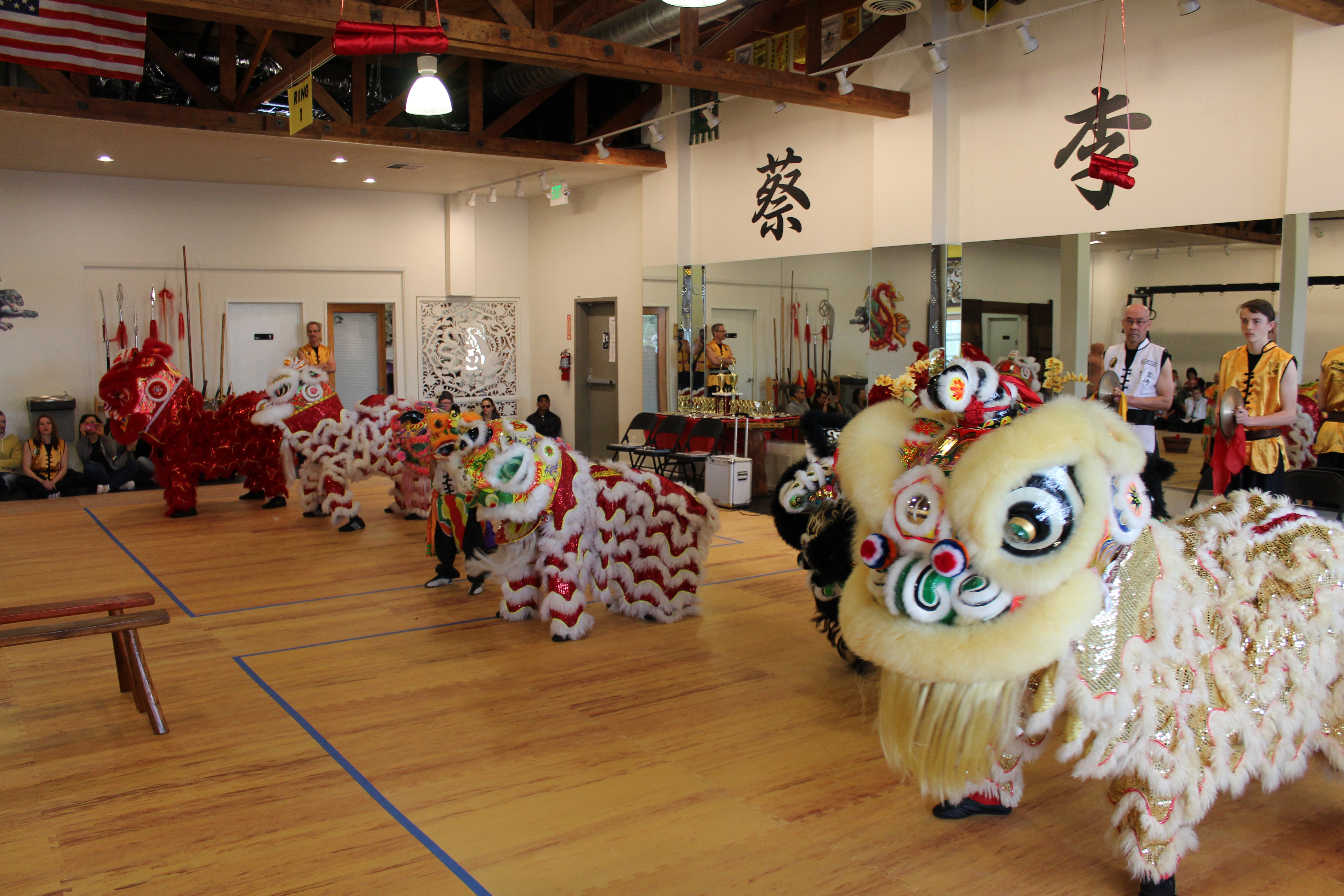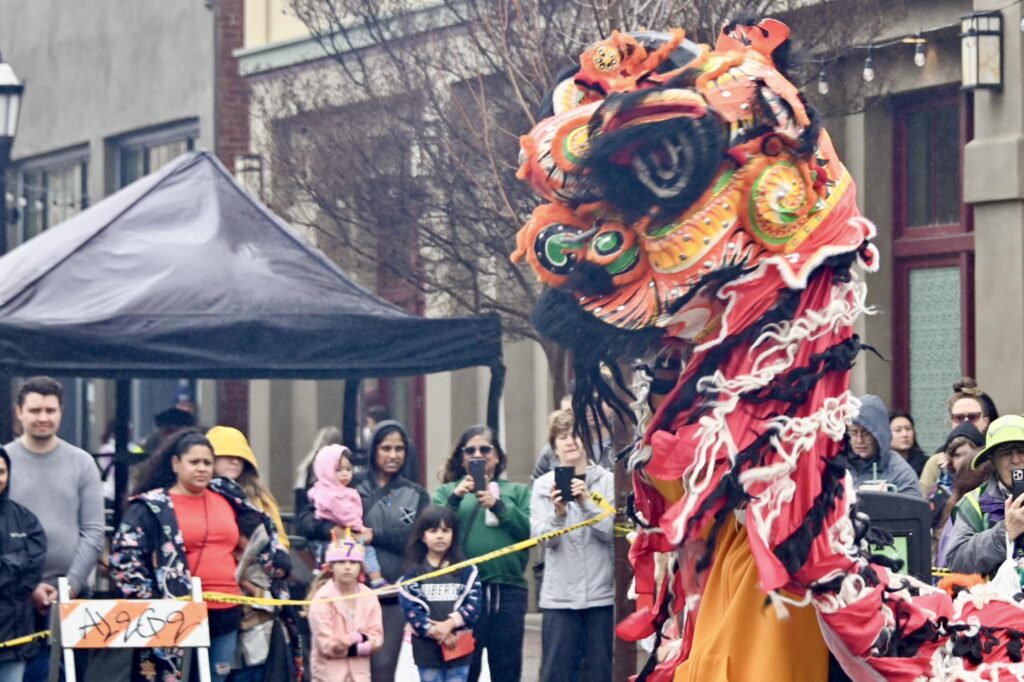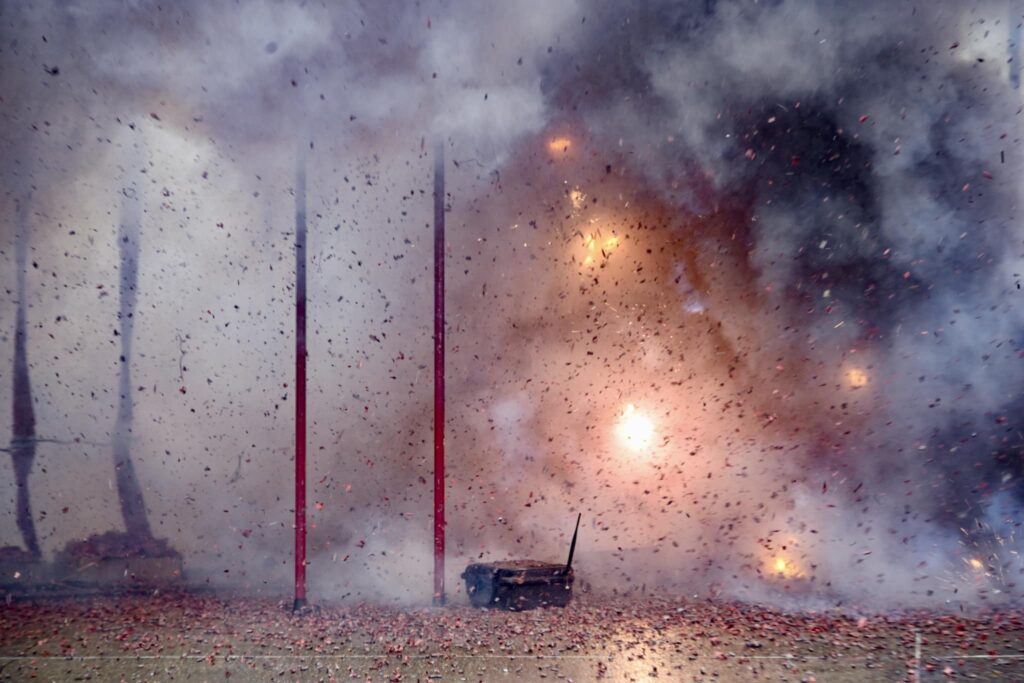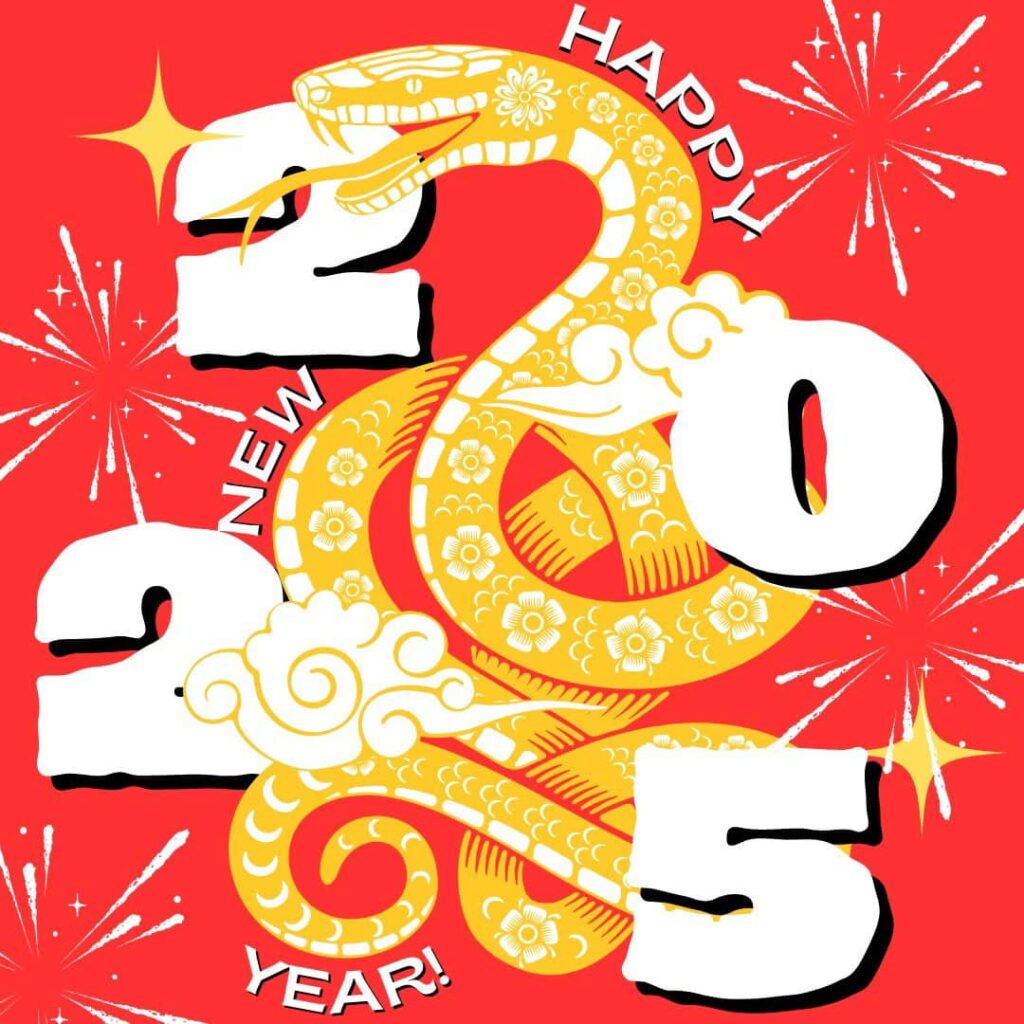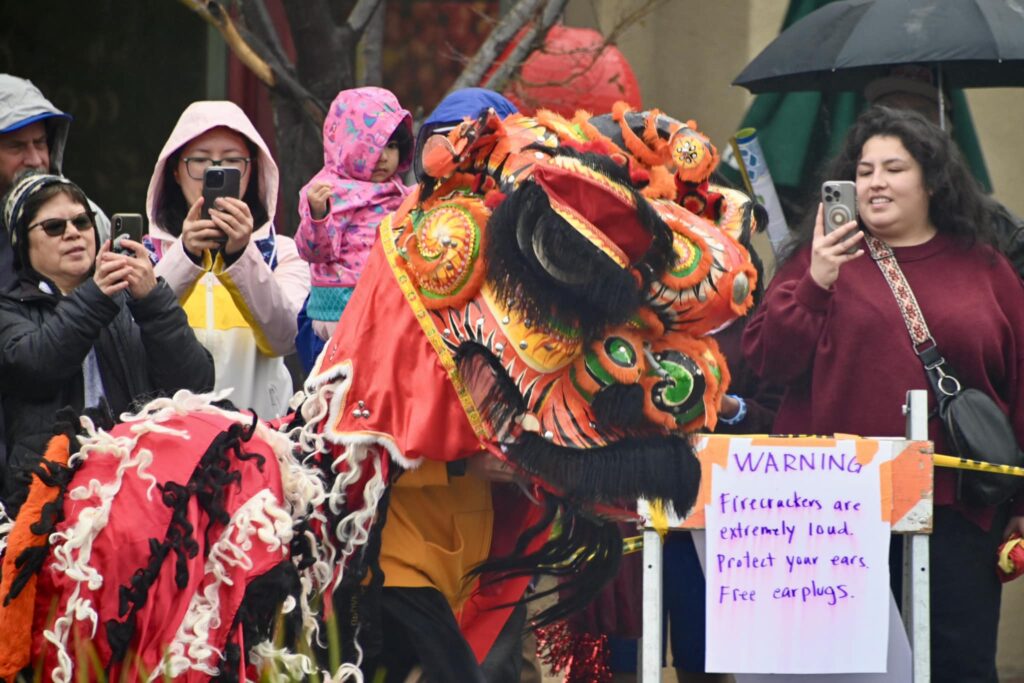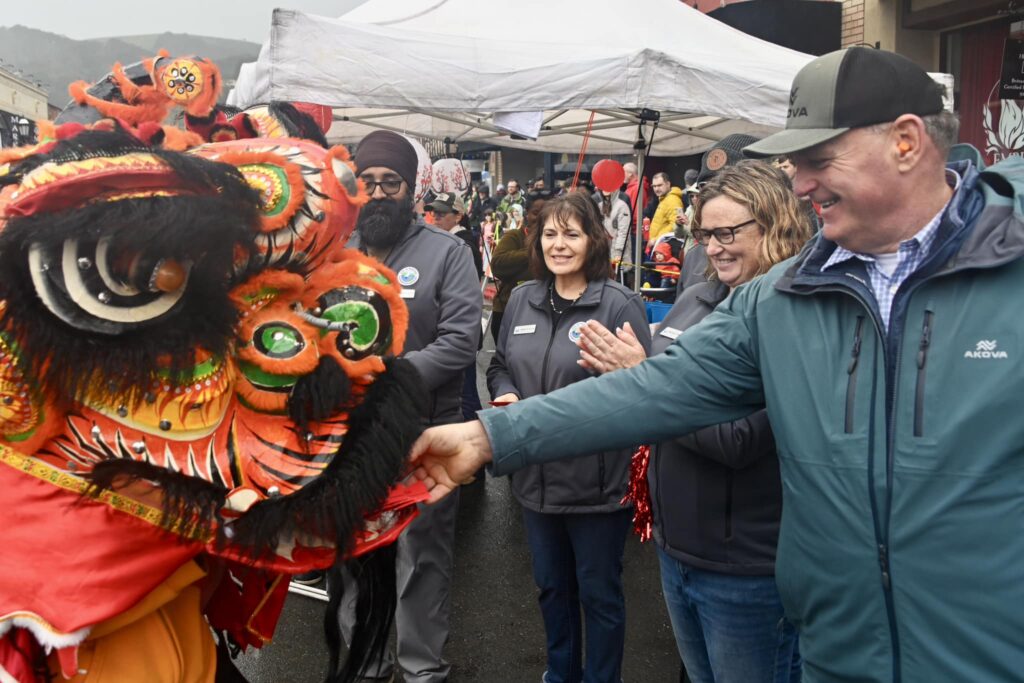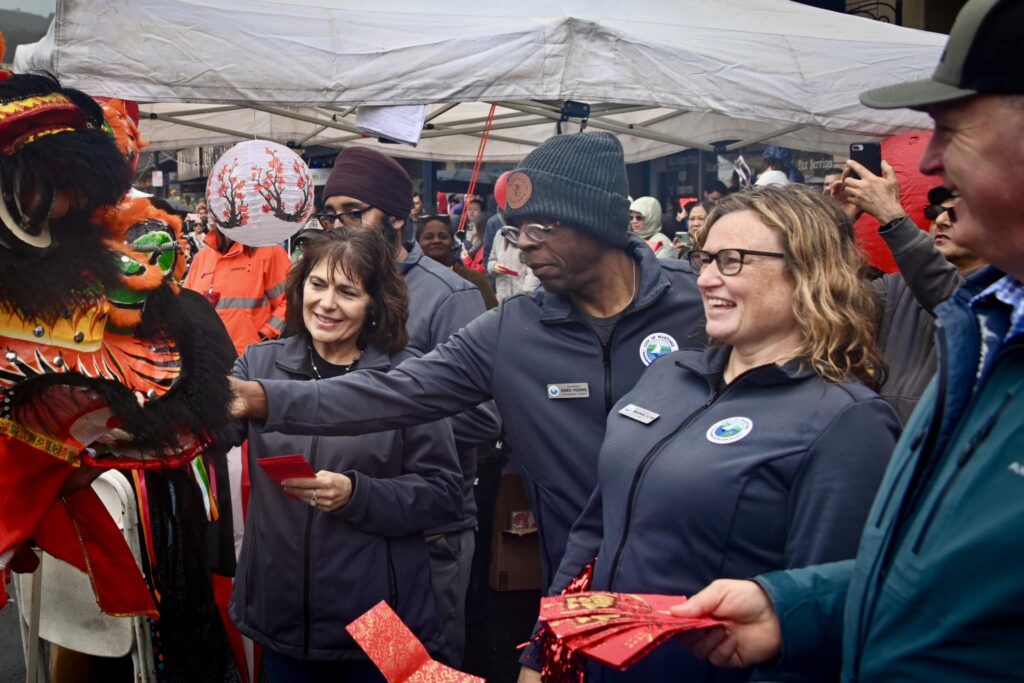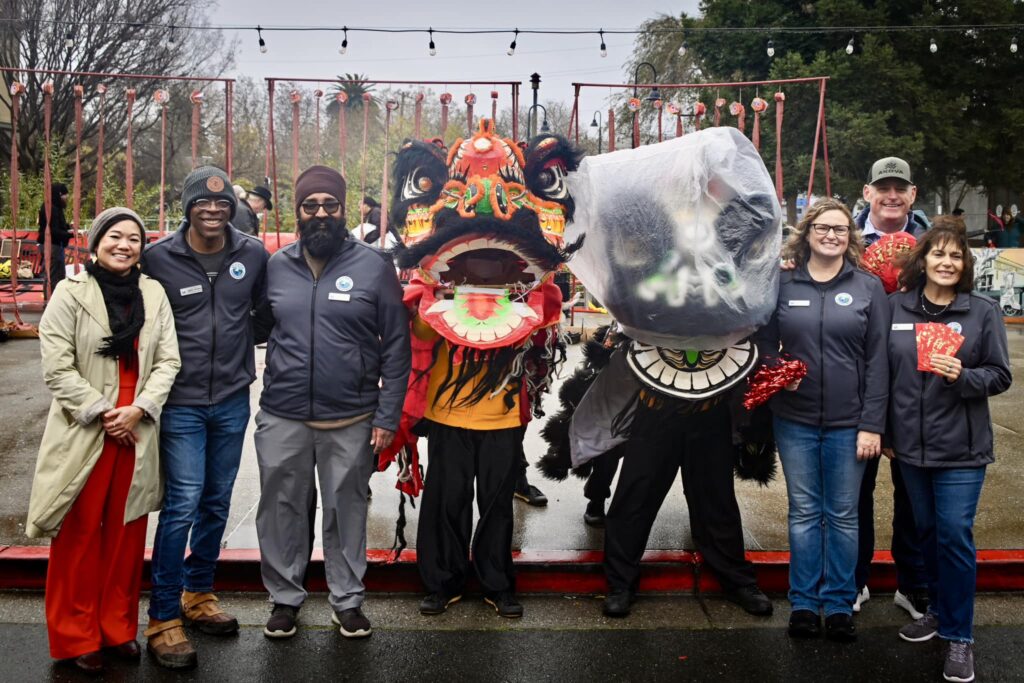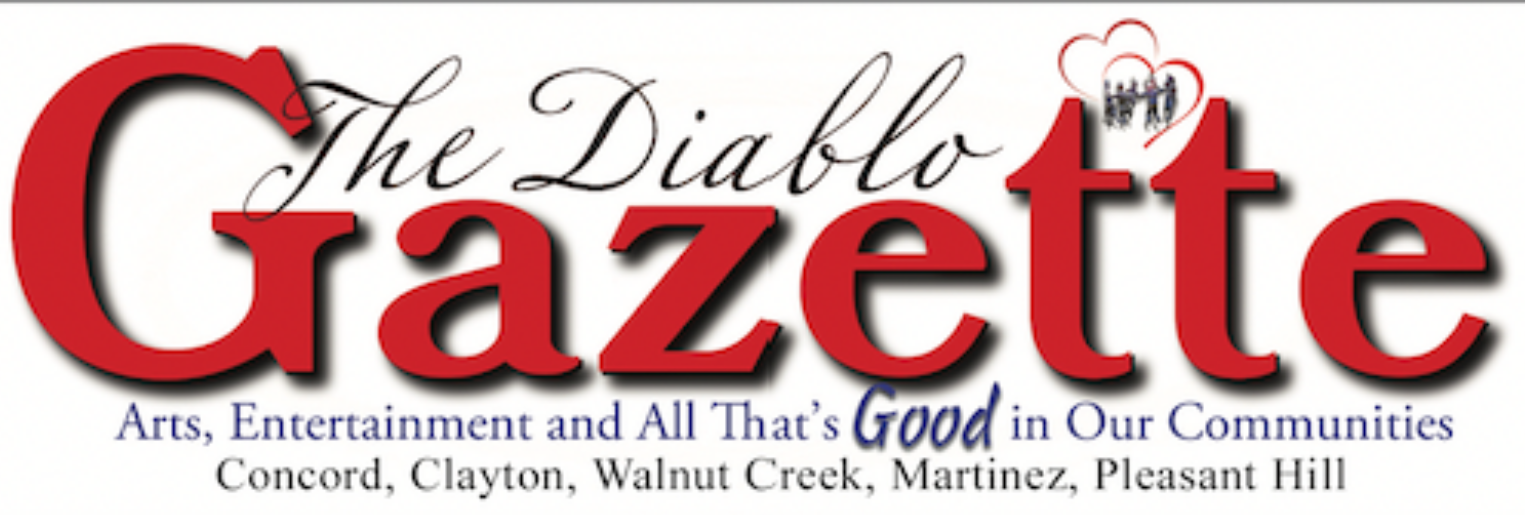The Chinese New Year is a celebration recognized by many Asian cultures, not just the Chinese. In China, it’s referred to as the Spring Festival. Lunar New Year date changes every year but always begins on the second new moon after the first day of winter. The Chinese New Year follows a lunar calendar based on the moon’s 12 phases. This year it started January 29,.
The centerpiece performance of Lunar New Year celebrations is the Lion Dance. (Note the cover photo.)
Kung fu clubs have long been associated with lion dancing as the lion dance incorporates various kung fu derived stances, kicks and other footwork in its routines.
The kung fu practitioners from Concord’s Tomizaki’s Champions Kung Fu have been extremely busy performing the Lion Dance at several local venues with 22 performances scheduled through the celebration’s final day, February 12. The 15th and final day is celebrated with the Lantern Festival.
Sifu Steffani Tomizaki has been sharing a brief history and mythology behind the Lunar New Year at their lion dance performances.
“There are many stories,” she states. “One of the stories I tell is the villagers went to the emperor and said, we don’t know how to tell the passing of time. And the emperor thought and decided he would create 12 cycles, and each cycle would be represented by an animal.
“And he held a race, and there was this big river to cross.” Tomizaki said there are different versions of how the race went, but it determined the order of the zodiac and the qualities of the animal bestowed upon those born under each’s sign: Rat, Ox, Tiger Rabbit, Dragon, Snake, Horse, Goat, Monkey, Rooster, Dog and Pig.
“We are now in the year 4,722, according to Sifu Steffanie. The Year of the Snake. The Snake is known as the most mysterious of all the animals of the zodiac. It’s typically considered introverted but is always thinking.”
Snakes in Chinese mythology are not seen as manifestations of wickedness as they are in Western culture.
But while people born in the year of the snake are seen as charismatic, intelligent and artistic, they are also often considered cunning and mysterious.”
The lion dance is used at many multicultural celebrations because it is to bring good luck and chase away all the evil spirits and the negative energy.
“The lion dance is loud, and that goes back to a folktale where on New Year’s Eve, a monster, Nian, would come out of the water and eat the children, but they found that the color red and loud noises would scare away the monster.
“The lion dance has some significant parts to it. You will always see a lion do three bows, and that’s representing heaven, earth, and man. There’s a mirror on the lion’s forehead, and that is so when an evil spirit sees its reflection, it scares itself away.
The drum of the lion represents the heartbeat of the lion. So, if the drum goes faster, the lion could be excited. And if the drum is softer, then maybe the lion’s a little nervous or apprehensive. If a lion comes and touches you with his beard, it’s giving you a blessing and good luck.”
The Tomizaki Lions performances this year include appearances at Tomizaki Kung Fu parking lot, 4700 Clayton Road, nearby businesses, elementary schools, libraries, Los Medanos College, The Veranda, Martinez Farmers Market, and even a Danville block party celebrating the birth of twins.
“Above all and it’s fun. Our practitioners all have a really good time. Last year, we rented the Brendan Theatre, and we took the lion dance team to see the premiere of Kung Fu Panda 4.”
The Year of the Snake!
